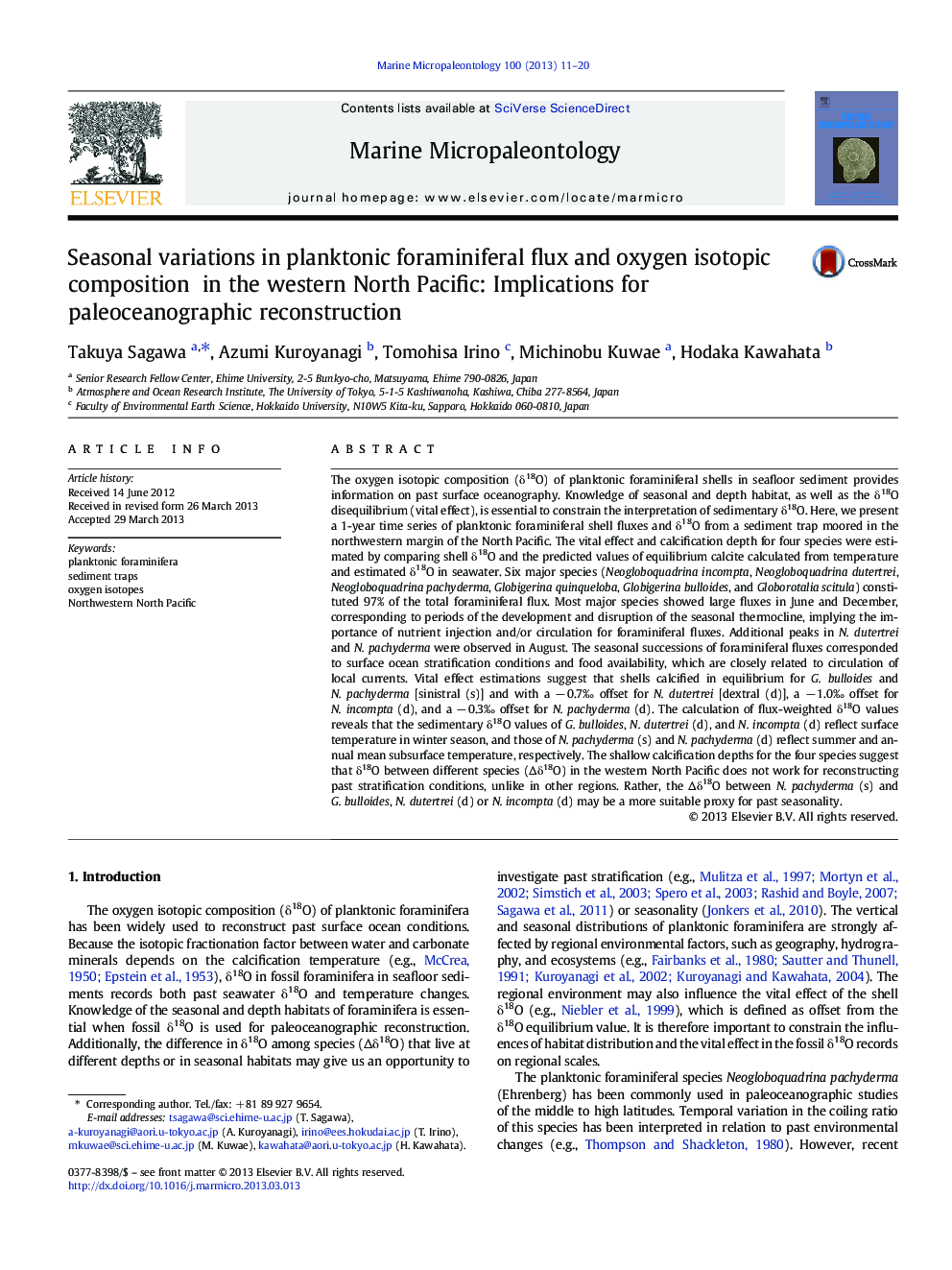| Article ID | Journal | Published Year | Pages | File Type |
|---|---|---|---|---|
| 4748931 | Marine Micropaleontology | 2013 | 10 Pages |
Abstract
The oxygen isotopic composition (δ18O) of planktonic foraminiferal shells in seafloor sediment provides information on past surface oceanography. Knowledge of seasonal and depth habitat, as well as the δ18O disequilibrium (vital effect), is essential to constrain the interpretation of sedimentary δ18O. Here, we present a 1-year time series of planktonic foraminiferal shell fluxes and δ18O from a sediment trap moored in the northwestern margin of the North Pacific. The vital effect and calcification depth for four species were estimated by comparing shell δ18O and the predicted values of equilibrium calcite calculated from temperature and estimated δ18O in seawater. Six major species (Neogloboquadrina incompta, Neogloboquadrina dutertrei, Neogloboquadrina pachyderma, Globigerina quinqueloba, Globigerina bulloides, and Globorotalia scitula) constituted 97% of the total foraminiferal flux. Most major species showed large fluxes in June and December, corresponding to periods of the development and disruption of the seasonal thermocline, implying the importance of nutrient injection and/or circulation for foraminiferal fluxes. Additional peaks in N. dutertrei and N. pachyderma were observed in August. The seasonal successions of foraminiferal fluxes corresponded to surface ocean stratification conditions and food availability, which are closely related to circulation of local currents. Vital effect estimations suggest that shells calcified in equilibrium for G. bulloides and N. pachyderma [sinistral (s)] and with a â 0.7â° offset for N. dutertrei [dextral (d)], a â 1.0â° offset for N.incompta (d), and a â 0.3â° offset for N. pachyderma (d). The calculation of flux-weighted δ18O values reveals that the sedimentary δ18O values of G. bulloides, N. dutertrei (d), and N. incompta (d) reflect surface temperature in winter season, and those of N. pachyderma (s) and N. pachyderma (d) reflect summer and annual mean subsurface temperature, respectively. The shallow calcification depths for the four species suggest that δ18O between different species (Îδ18O) in the western North Pacific does not work for reconstructing past stratification conditions, unlike in other regions. Rather, the Îδ18O between N. pachyderma (s) and G. bulloides, N. dutertrei (d) or N. incompta (d) may be a more suitable proxy for past seasonality.
Related Topics
Physical Sciences and Engineering
Earth and Planetary Sciences
Palaeontology
Authors
Takuya Sagawa, Azumi Kuroyanagi, Tomohisa Irino, Michinobu Kuwae, Hodaka Kawahata,
